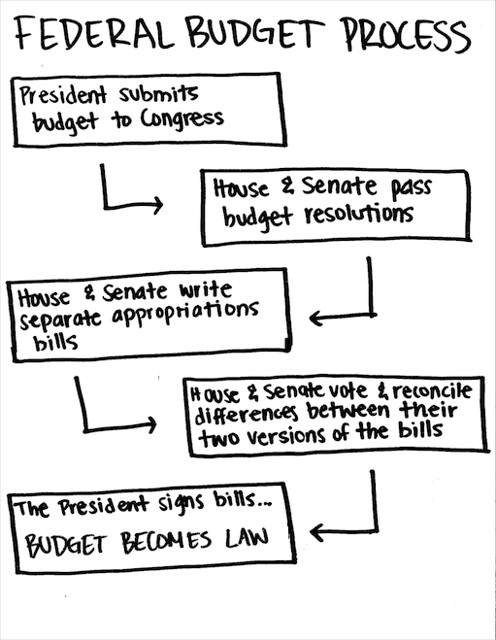You Ask, We Answer: Why Are There Different Versions of the Budget?
By
Mattea Kramer
Posted:
|
Budget Process,
Transparency & Data
Rebecca from Lititz, Pennsylvania, asked: Why are there different versions of the budget, and who decides which one becomes the actual budget for the federal government?
It’s a good question. You might have read in the news recently about the House budget introduced by Rep. Paul Ryan. And back in February, you might have heard about President Obama’s new budget. So, how do these different proposals turn into a single federal budget?

President Obama's budget, released back in February, was a proposal for Congress to consider. And the recent House budget was a budget resolution. A budget resolution sets spending guidelines for different areas of the federal government without getting into specifics for particular programs. In other words, both of those budgets were just first drafts.
In the coming months, Appropriations subcommittees in both the House and Senate are supposed to write appropriations bills to determine precise funding levels for specific federal programs. Then the House and Senate reconcile differences between their two versions of appropriations bills. If the process stays on track, President Obama will sign these pieces of legislation for the start of fiscal year 2013, which begins on Oct. 1, 2012, and then we'll have a new federal budget.
Many Washington insiders don’t expect the process to stay on track in this high-stakes election year, however. If there are no appropriations bills for President Obama to sign by Oct. 1, then Congress likely will pass bills called continuing resolutions, which will maintain funding for the federal government until a real budget becomes law.
For lots more detail on the federal budget process, check out Federal Budget 101.